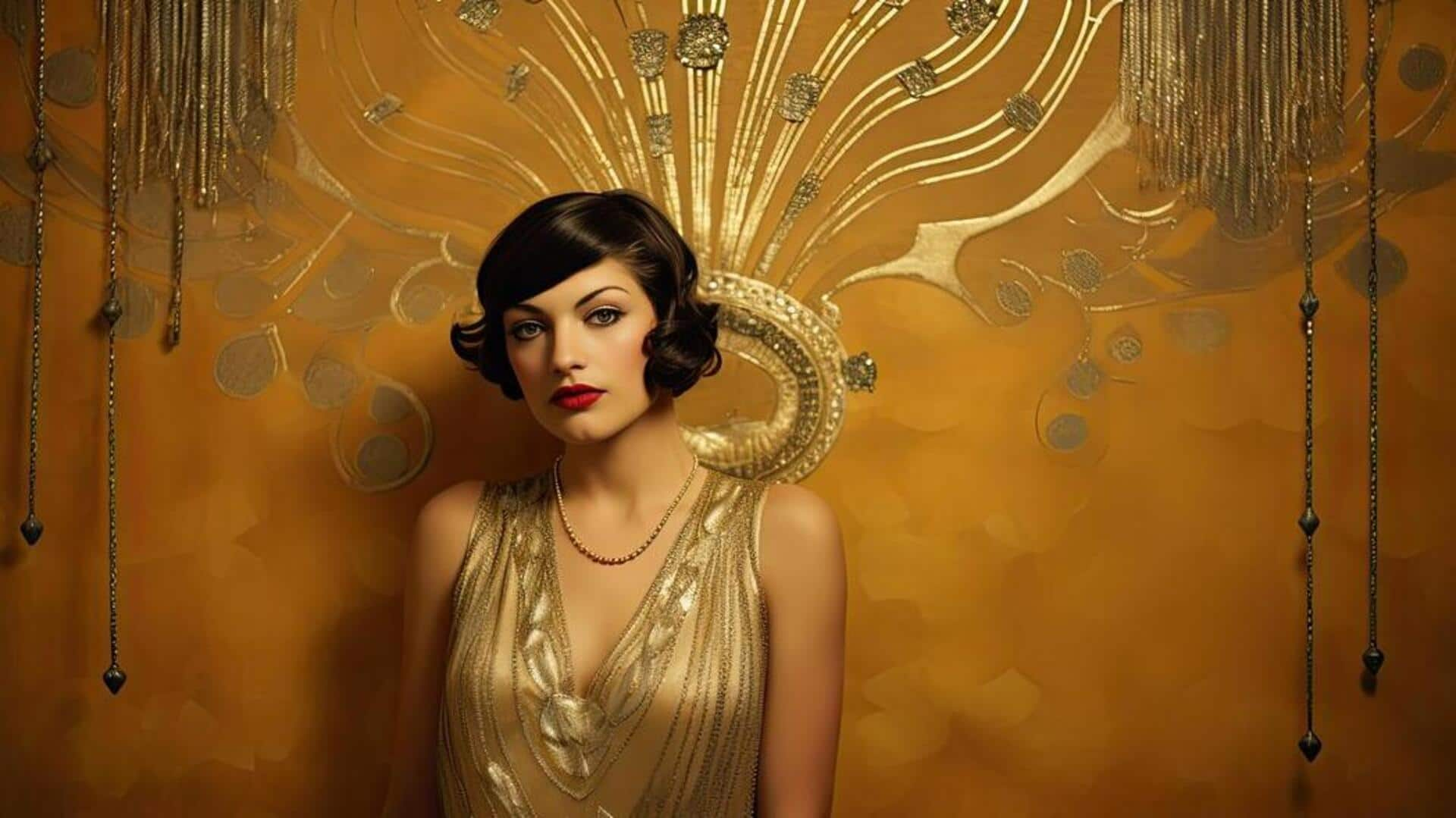Art Deco Revival: Modern Interpretations of a Timeless Style
Art Deco Revival showcases modern interpretations of a timeless style, blending past and present seamlessly. This design trend brings the elegance and glamour of the Art Deco era into contemporary settings, creating a unique aesthetic that appeals to both traditional and modern sensibilities.
Drawing inspiration from the geometric shapes, bold colors, and luxurious materials characteristic of Art Deco design, this revival breathes new life into a classic style. By incorporating elements such as sleek lines, metallic accents, and intricate patterns, designers are able to pay homage to the past while infusing spaces with a fresh, sophisticated look.
As Art Deco continues to influence the world of design, its revival serves as a testament to the enduring appeal of this iconic aesthetic.

Credit: medium.com
Art Deco Revival In The 21st Century
The Art Deco style, known for its sleek lines, geometric shapes, and opulent materials, emerged in the 1920s and 1930s. While it had its heyday during the Jazz Age, Art Deco continues to captivate and inspire designers in the 21st century. This revival of Art Deco design has brought a fresh perspective to the timeless style, blending it with modern elements and influences to create stunning contemporary pieces.
Current Popularity
Art Deco has experienced a resurgence in popularity in recent years, with its bold aesthetic and glamorous appeal resonating with modern audiences. Its clean lines and symmetrical patterns have found a place in various design disciplines, including architecture, interior design, fashion, and even graphic design. The allure of Art Deco lies in its ability to evoke a sense of luxury and sophistication, making it a popular choice for those seeking a touch of elegance in their surroundings.
Influences In Modern Design
Art Deco has had a significant influence on modern design, shaping the way we perceive and appreciate aesthetics today. Its emphasis on geometric forms and abstract motifs can be seen in contemporary architecture, where buildings often feature strong lines and bold shapes. The use of luxurious materials like glass, chrome, and mirror surfaces adds a touch of opulence to modern interiors, while still maintaining a sleek and minimalist feel.
Art Deco’s influence also extends to the world of fashion, with designers drawing inspiration from the glamorous and extravagant style. From the red carpet to high-end couture, the Art Deco revival can be observed in the form of beaded gowns, geometric patterns, and statement accessories.
Furthermore, the Art Deco aesthetic has made its way into the realm of graphic design, with its iconic elements being utilized in logos, posters, and digital illustrations. The bold typography, symmetrical compositions, and vibrant color palettes associated with Art Deco add a touch of vintage allure to contemporary designs.
In conclusion, the Art Deco revival in the 21st century showcases the enduring appeal and timeless beauty of this iconic style. Its influence can be seen in various design disciplines, from architecture and interior design to fashion and graphic design. By blending the elegance of the past with the innovations of the present, designers have created a modern interpretation of Art Deco that continues to captivate and inspire.
Historical Roots Of Art Deco
Explore the historical roots of Art Deco, a style that continues to inspire modern interpretations. Discover how the Art Deco revival captures the essence of a timeless design aesthetic in contemporary art and architecture.
Art Deco is an iconic design style that emerged in the early 20th century and is still popular today. This style was born out of a desire to break away from traditional design styles and embrace a new, modern aesthetic. Art Deco was heavily influenced by the artistic movements of the time, including Cubism and Futurism, as well as the industrial revolution and new technologies that were emerging.Origins And Development
The Art Deco movement originated in France in the 1920s, but it quickly spread throughout the world, becoming a popular design style in the United States, Europe, and even in countries like India and Australia. The movement was driven by a desire to create a new, modern aesthetic that reflected the changing times.Key Characteristics
Art Deco is characterized by its use of geometric shapes, bold colors, and luxurious materials. The style is often associated with the glamour and excess of the 1920s and 1930s, but it has also been adapted to suit modern tastes. Some of the key characteristics of Art Deco include:- Geometric shapes, including zigzags, chevrons, and sunbursts
- Strong vertical lines
- Bold, contrasting colors
- Use of luxurious materials, such as gold, silver, and exotic woods
- Asymmetry and the use of mirrored or reflective surfaces
- Incorporation of industrial and machine-like elements
Key Elements Of Art Deco Style
The Art Deco style, with its distinctive blend of luxury, glamour, and modernity, continues to captivate and inspire designers and enthusiasts alike. As we witness an Art Deco revival in contemporary design, it’s essential to explore the key elements that define this timeless aesthetic.
Geometric Shapes
Art Deco style is characterized by geometric shapes such as chevrons, zigzags, and sunburst motifs. These angular and symmetrical forms create a sense of dynamism and modernity, reflecting the industrial and technological advancements of the era.
Bold Colors And Patterns
The use of bold colors such as vibrant reds, deep blues, and rich golds, alongside striking black and white contrasts, defines the Art Deco palette. These hues are often paired with striking patterns like geometric grids, stylized florals, and exotic motifs, adding visual impact and sophistication to the design.
Modern Interpretations In Architecture
Art Deco Revival has not only influenced the world of design and fashion, but it has also left a lasting impact on the field of architecture. The clean lines, geometric shapes, and bold colors of the Art Deco style have inspired architects to create modern interpretations that pay homage to the timeless elegance of the original movement.
Contemporary Structures
Contemporary architecture embraces the principles of Art Deco, infusing them with a fresh perspective. Bold facades, sleek materials, and innovative designs characterize these modern interpretations. Architects incorporate elements such as stepped forms, decorative motifs, and prominent vertical lines to create visually striking structures that capture the essence of the Art Deco movement.
Renovation Of Classics
One of the most remarkable aspects of Art Deco revival in architecture is the renovation of classic buildings. Architects have taken iconic Art Deco structures and breathed new life into them, preserving their historical significance while adapting them to modern needs. Through meticulous restoration and careful additions, these buildings seamlessly blend the past and present, showcasing the enduring allure of the Art Deco style.
Influence On Interior Design
Art Deco, with its bold geometric shapes and luxurious materials, has made a remarkable comeback in the world of interior design. Its influence on modern homes is evident in the resurgence of furniture and decor trends that embrace the elegance and opulence of the Art Deco era.
Furniture And Decor Trends
The revival of Art Deco in interior design has sparked a resurgence in furniture and decor trends that celebrate the iconic style of the 1920s and 1930s. From sleek geometric coffee tables to luxurious velvet sofas, Art Deco-inspired furniture brings a touch of glamour to contemporary living spaces. Decor elements such as mirrored surfaces, bold patterns, and metallic accents add a sense of sophistication and grandeur to modern interiors.
Incorporating Art Deco In Modern Homes
When it comes to incorporating Art Deco in modern homes, it’s all about striking a balance between vintage charm and contemporary aesthetics. Geometrically inspired lighting fixtures and statement-making wall art can infuse Art Deco flair into any room, while maintaining a fresh and current look. Embracing the opulence of Art Deco through rich textures, such as marble and brass, creates a luxurious atmosphere that pays homage to the timeless style.
Art Deco In Visual Arts And Media
Art Deco in Visual Arts and Media encompasses a dynamic fusion of geometric shapes, bold colors, and luxurious materials. This iconic style has made a significant impact on contemporary design elements, inspiring modern interpretations across various artistic mediums.
Graphic Design And Typography
Art Deco influences are prominently featured in graphic design today, with designers incorporating sleek lines and intricate patterns in their digital creations. The use of bold typography and metallic accents pays homage to the opulence of the Art Deco era.
Film And Television
In the realm of film and television, the Art Deco aesthetic continues to captivate audiences through set designs and costumes. Directors and production designers draw inspiration from the era’s glamour and sophistication, infusing modern storytelling with vintage flair.
Fashion’s Ode To Art Deco
In the world of fashion, designers are paying homage to the timeless elegance of Art Deco through modern interpretations in their creations. From geometric patterns to luxurious embellishments, Fashion’s Ode to Art Deco is a celebration of the glamour and sophistication of this iconic style.
Runway Inspirations
Art Deco elements are gracing the runways with bold lines and rich colors.
Designers are incorporating sleek silhouettes and intricate detailing inspired by the Art Deco era.
Jewelry And Accessory Designs
Art Deco-inspired jewelry and accessories are making a statement with their geometric shapes and opulent materials.
From statement necklaces to embellished clutches, the glamour of the Art Deco era shines through in modern designs.

Credit: www.newsbytesapp.com
The Future Of Art Deco
Art Deco’s future lies in innovative interpretations that blend timeless elegance with modern sustainability.
Sustainable Practices
Embracing reclaimed materials and eco-friendly production methods.
Technological Integration
Integrating smart technology and digital artistry into Art Deco designs.

Credit: onehometherapy.com
Frequently Asked Questions
What Is Art Deco Style?
Art Deco is a modernist style that originated in the 1920s and 1930s. It is known for its geometric shapes, streamlined forms, and use of materials like glass and chrome. The style was popular in architecture, fashion, and art.
How Has Art Deco Influenced Modern Design?
Art Deco has influenced modern design in many ways. It has inspired designers to incorporate geometric shapes and bold colors into their work. Many furniture and lighting designs also draw inspiration from Art Deco, with their sleek forms and use of materials like metal and glass.
What Are Some Key Elements Of Art Deco Revival?
Key elements of Art Deco revival include geometric shapes, bold colors, metallic finishes, and luxurious materials like velvet and marble. The style is often combined with contemporary elements to create a fresh, modern look.
How Can I Incorporate Art Deco Into My Home Decor?
You can incorporate Art Deco into your home decor by using geometric patterns, bold colors, and metallic finishes. Consider adding furniture with sleek, streamlined forms, and accessories like mirrors and lighting fixtures with Art Deco details. Mix Art Deco pieces with contemporary elements for a modern look.
Conclusion
Incorporating Art Deco elements into modern design brings timeless sophistication to contemporary spaces. Embracing the sleek lines, geometric patterns, and luxurious materials of the Art Deco era adds a touch of glamour to any interior. By reimagining this iconic style, designers continue to pay homage to its enduring allure while infusing it with fresh, innovative interpretations.